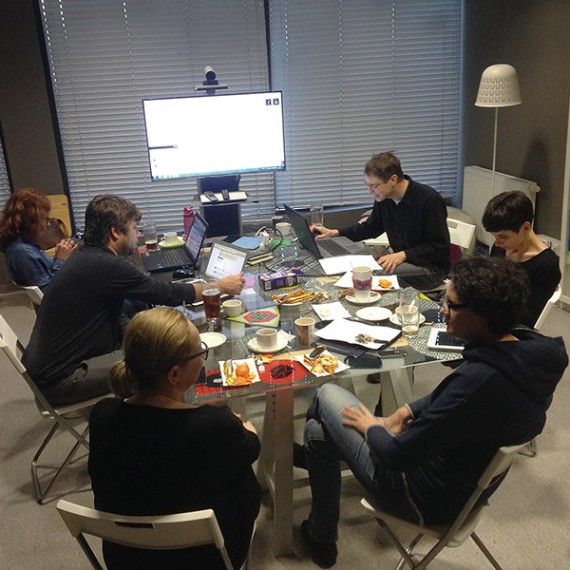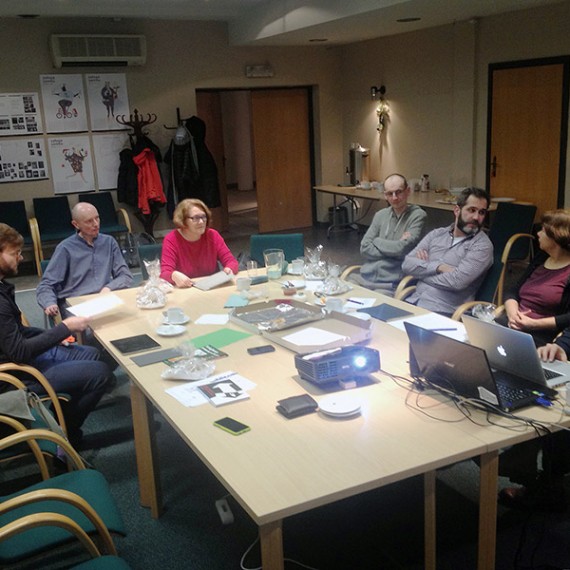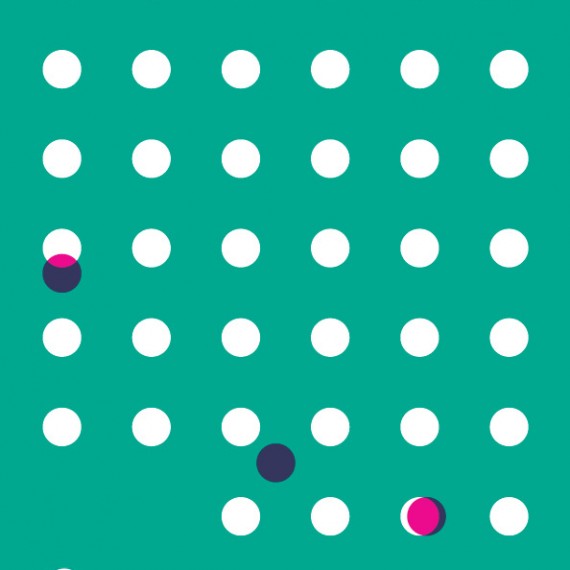The Chosen Ones
Selected projects are presented on the Review website
and at the exhibition at the Castle Cieszyn (until March 31)
---
As has become a pre‑Christmas tradition, the Graduation Projects jury again convened this year, on 19 December.
The Graduation Projects review has taken place since 2002; for the past eleven years it has been co‑created by Zamek Cieszyn, and for six years it has been international in scope, and supported by the International Visegrad Fund. The regulations have not evolved over this last period – any BA and MA projects defended in the Czech Republic, Hungary, Poland and Slovakia can be submitted, as can works by citizens of these countries living abroad. Awards are given to twenty 2D and twenty 3D projects. The jury meeting is prefaced by an initial selection, based on e‑mail consultations.
This year’s jury included: Filip Blažek (TYPO) from the Czech Republic; Czesława Frejlich, Bogdan Kosak, Michał Latko, Jacek Mrowczyk, Kuba Sowiński (2+3D), as well as Ewa Gołębiowska, Anna Pilch and Wioletta Beczek (Zamek Cieszyn) from Poland; Martin Bu and Lívia Pemčáková (1977) from -Slovakia. This time, as an exception, Krisztina Somogyi (Plusminus Visual Intelligence) was only able to send in her votes. The 2D and 3D works were evaluated separately. Every organization had one vote. The jury was supported by the -remaining 2+3D editors – review commissioner Wojciech Kubiena, Agata Korzeńska, who was responsible for the exhibition’s graphic design, and the undersigned.
323 submissions were received in total (as compared to last year’s 299). As usual, the lion’s share came from Poland (244), and the smallest number from Slovakia (14). There were almost as many 2D entries as there were 3D. The level of the submissions was only slightly lower than last year’s very high standard. Where 3D works were concerned, this year’s review had a large -number of designs that showed excellent technique, though somewhat fewer were based on original ideas; there were also some experimental -submissions. Things were not the same in the 2D category. Here we sought in vain for works that experimented with graphic language.
The mixed jury took care to ensure that the evaluations considered many levels of the works, which often eliminated uneven pieces. In the graphic designs it meant that the final selection did not include projects that boasted only good illustrations if they needed more work from a design perspective. In the industrial design discussions, a precise technical development of the work was obviously seen as crucial; this included the preparation of a model, and preferably, a prototype. Regardless of the field, a firm assessment of the design issue was considered a basic requirement, while unfocused design efforts discredited the student in the eyes of the jury. Some jurors suggested creating a separate category for designs that could not be neatly categorized as 2D or 3D; the problem of atypical experimental designs was also raised.
To conclude, we ought to mention two things. The only complex visual city wayfinding system we received was excessively similar to a well‑known solution, and because of this lack of originality, we could not include it in the final selection. Also, we still come across works that suffer from poor presentation, which is always regarded as a failure of the young designer. Graduate students must recall these things, whether or not they choose to take part in our review.
—
The Graduation Projects exhibition will open on 30 January at Zamek Cieszyn, and continues until 31 March 2016.



